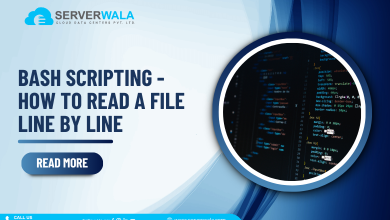What’s the Difference Between Docker Images and Containers?
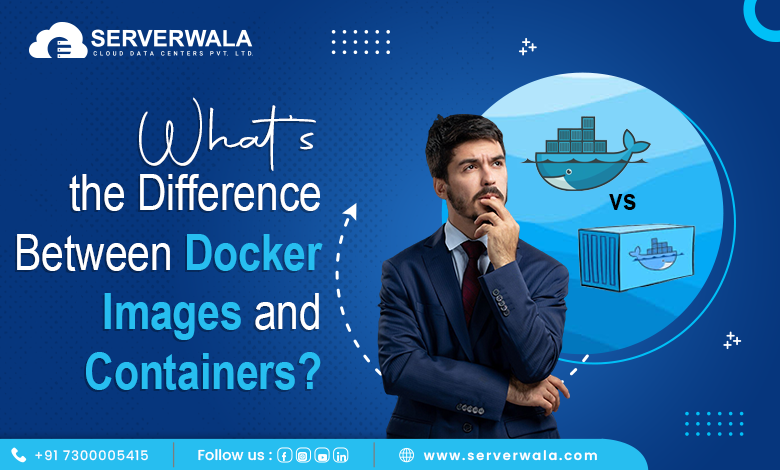
Preface
In the world of containerization, apprehending the difference between Docker images and containers is critical. If you have ever wondered, “What is Docker container and image?” or wondered about the key distinctions between the two, you’re not alone. Many developers and system admins use terms like “image vs container” interchangeably, but there’s a clear difference between Docker containers and Docker images.
This guide will help clarify “Docker image vs container” by breaking down their roles, how they function, and the relationship between the two. Towards the end, you will have a in-depth comprehending of how Docker images and containers work together to make modern development efficient and scalable.
What is Docker Images and How does it works?
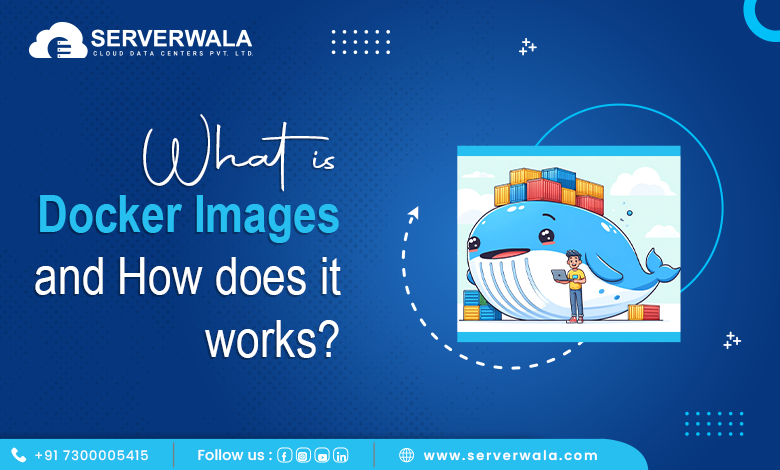
A Docker image is essentially a lightweight and implementable package. It consists of everything required to operate a piece of software, incorporating the libraries, code, runtime, and configurations. Docker images are read-only templates from which Docker containers are created. When you operate a Docker image, it turns into a container.
But what is an image in Docker exactly? It’s a blueprint. Consider it as the constructing blocks or the skeleton. It defines the environment for a Docker container without actually running any of its components. To create an image, developers use Dockerfiles—scripts that automate the creation of Docker images by defining everything the container needs.
Docker images are kept in a registry, like Docker Hub, from where you can pull them. Once pulled, you can create containers from these images. This is where “Docker image from container” confusion arises. While Docker images act as templates, containers are the live running instances of these images. Simply put, Docker images are static, while containers are dynamic. Containers vs images Docker essentially showcases this dynamic-static relationship.
This dynamic is a major reason why containers are ideal for scalability and isolated environments. In a “docker container vs image” comparison, images provide consistency, but containers offer flexibility. The “docker difference between image and container” lies in the fact that while Docker images provide the blueprint, containers bring the blueprint to life by running it.
What is Docker Container and How does it works?
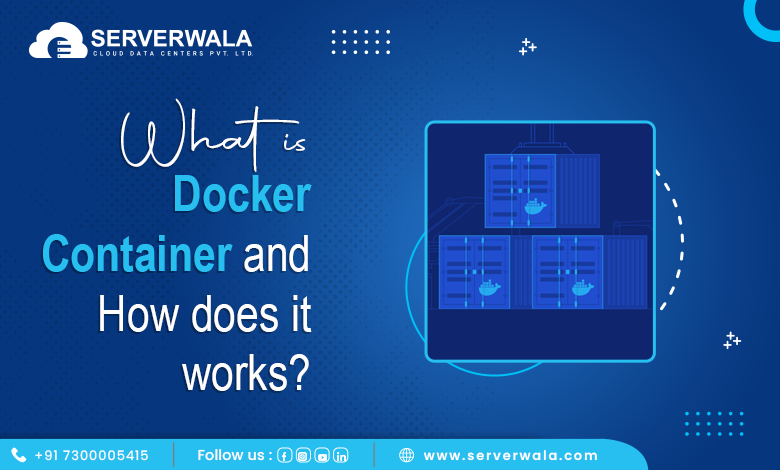
A Docker container is a lightweight, portable, and self-sufficient unit that holds everything required to operate an application. Unlike virtual machines, containers share the host system’s kernel, making them quicker and more effective. Docker containers are constructed from Docker images, which serve as the blueprint.
As soon as you possess a Docker image, you can employ it to construct one or more containers. But what is a Docker container? It’s a running instance of the image, isolated from other processes, ensuring the application functions in a consistent platform across varied systems. Docker containers use resources from the host OS but remain independent from each other, which is crucial for resource management and security.
The “Docker container vs image” distinction is simple. Images are static, read-only templates that define the environment. Containers, on the other hand, are the live, running applications based on those templates. This is why the “Docker difference between image and container” matters: images define what to run, while containers actually run it.
Here’s how a Docker container works:
- Start with a Docker Image: You first need to pull or create a Docker image.
- Create a Container from the Image: Once you have the image, you run a command like docker run to create a container.
- Isolated Environment: The container runs the application in an isolated, consistent environment.
- Shared Resources: Although containers share the same kernel with the host, they operate separately from each other.
- Portable and Scalable: Docker containers can be quickly replicated, making them ideal for scaling applications.
The container vs image concept is essential for understanding how Docker optimizes application deployment. Containers provide the flexibility needed for different applications to run in the same environment, regardless of the underlying infrastructure.
Why are Docker images and containers used?
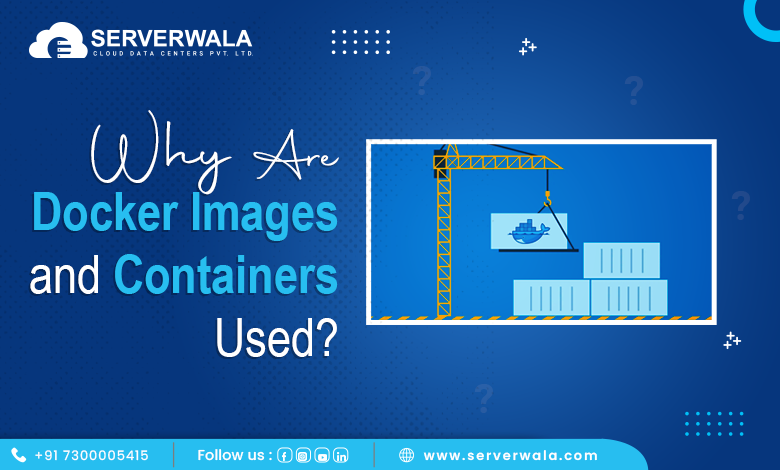
Docker images and containers are essential for modern software development because they streamline application deployment, improve scalability, and enhance flexibility. They are widely adopted in environments that require consistent and reliable software performance across different platforms. Let’s break down why Docker images and containers are used:
Consistency Across Environments:
Docker images provide a standard environment for running applications. They bundle everything needed, including code, libraries, and dependencies, into one package. This ensures the same application runs smoothly, whether it’s on a developer’s machine, a testing server, or in production. The “docker image vs container” concept ensures that the app behaves the same everywhere.
Isolation and Resource Efficiency:
Containers run isolated from other applications. Unlike traditional virtual machines, which require separate OS instances, Docker containers share the host OS’s kernel, reducing overhead. This isolation permits several containers to run simultaneously without interference, leading to efficient resource usage. The “docker container vs image” difference is key here: images set up the environment, while containers run applications in their own isolated space.
Portability:
Docker containers are portable across several platforms. Since they are built from the same Docker image, you can move them between cloud platforms, physical servers, and virtual machines without worrying about system differences. This portability ease up the deployment process and guarantees consistency.
Scalability:
Docker containers are perfect for scaling applications. Whether you need to scale horizontally by running multiple containers of the same application or vertically by adding resources to the existing containers, Docker simplifies this. The “container vs image” relationship enables you to quickly replicate containers from a single Docker image, supporting fast scaling in response to increased demand.
Fast Deployment and Testing:
Docker images make it easy to test, deploy, and update applications. Because images are read-only templates, developers can create and deploy containers quickly from them. The difference between Docker image and container is vital here; images are static, while containers are fast-running environments created from those images.
Simplified CI/CD Pipelines:
Docker streamlines continuous integration and continuous deployment (CI/CD). With Docker images, you can automate the constructing, testing, and deployment of applications in consistent environments. Containers vs images Docker discussion comes into play in CI/CD, as images are prepared for each stage while containers execute the tests.
Version Control and Rollback Capabilities:
Docker images support version control, allowing developers to track changes over time. Each image can be tagged with a version number, enabling teams to revert to a previous version if needed. This capability is crucial for maintaining application stability and managing releases. The “docker image vs container” distinction plays a role here; while images serve as historical snapshots, containers represent the current running state of the application.
Microservices Architecture Support:
Docker containers are ideal for microservices architectures, where applications parted into smaller, autonomously deployable services. Each microservice can operate in its own container, permitting for autonomous development, scaling, and deployment. This architecture promotes flexibility and faster development cycles. The “docker container image” concept helps in managing these microservices effectively, as each service can be packaged with its dependencies, ensuring smooth interactions between them.
When to use: Docker images vs. Docker containers
Knowing when to use a Docker image vs. a Docker container is key to efficient application management. Let’s break down the scenarios for each:
- When to Use Docker Images:
- Building an Application Environment: If you’re defining the components of your application (libraries, dependencies, code), use Docker images. The image acts as a blueprint for creating your application’s environment.
- Sharing or Distributing an Application: Docker images are ideal when you need to distribute or share applications across teams or environments. Developers can pull an image from a registry, ensuring consistency across platforms.
- Creating Multiple Containers: If you want to run multiple instances of the same application, start with the Docker image. You can spin up multiple containers from one image.
- Version Control: Docker images allow you to administer several versions of an application readily. You can tag images, test new features, and roll back if needed. This simplifies testing in CI/CD pipelines.
- When to Use Docker Containers:
- Running Applications: Once your Docker image is built, use a Docker container to run the application. The container is the live, executable instance of the image. It’s where the application actually operates.
- Testing in Isolated Environments: Need to test an application in different environments without interference? Use Docker containers. Each container runs independently, simulating different environments.
- Scaling Your Application: If demand increases, you can quickly scale by running more containers from the same Docker image. Containers are flexible and lightweight, making them perfect for scaling workloads.
- Deploying to Production: Docker containers are what you deploy to production. They encapsulate your application and ensure it runs the same way in any environment—whether on a local machine or in the cloud.
The “Docker container vs image” difference boils down to their purpose. Images define what an application should look like; containers are the execution environment for that application. When deciding between “Docker image vs container,” remember that images are for setup and containers are for execution.
Docker images vs. Docker containers: Major Differences
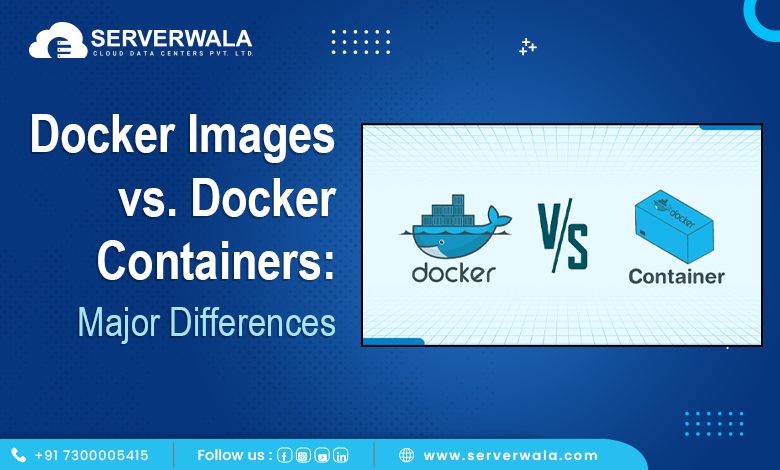
Understanding the major differences between Docker images and Docker containers is essential for efficient containerized application management. Let us dig down into the key distinctions between the two:
- Definition and Purpose:
- Docker Image: A Docker image is a static, read-only template that holds everything required to run an application—code, libraries, dependencies, and system tools. It’s a blueprint used to create containers.
- Docker Container: A Docker container is the live, running instance of an image. It’s the environment where the application actually executes. Unlike images, containers are dynamic and can be begun, stopped, and modified.
- State:
- Docker Images: These are immutable. Once created, the image remains unchanged, providing consistency across environments.
- Docker Containers: Containers are mutable. They can change during execution, and you can modify files, configurations, or applications running inside.
- Lifecycle:
- Image: Docker images are built once and kept in a Docker registry (such as Docker Hub) or locally. You build various containers from the same image.
- Container: Containers are short-lived and can be constructed, stopped, and destroyed as required. They represent a running environment based on the image.
- Use Cases:
- Docker Images: Ideal for defining application environments, distributing, and version-controlling applications. You create and share images across teams or deploy them to different environments.
- Docker Containers: Perfect for executing and testing applications. You use containers to run the code, monitor the application’s behavior, and scale as required.
- Storage:
- Image: Stored in a read-only format. Docker images are layered, meaning each layer adds additional components like code, libraries, or configurations.
- Container: Containers have writable layers. When you run a container, any changes made are written to this layer, allowing the container to modify its internal state.
- Portability:
- Docker Image: Highly portable. Once an image is created, it can be moved and shared across different platforms without alteration.
- Docker Container: Containers can be easily replicated from the same image, making them portable across environments. However, containers rely on the image for consistency in execution.
Also Read: How to List, Start, and, Stop Docker Containers?
Docker images vs. Docker containers: Key commands
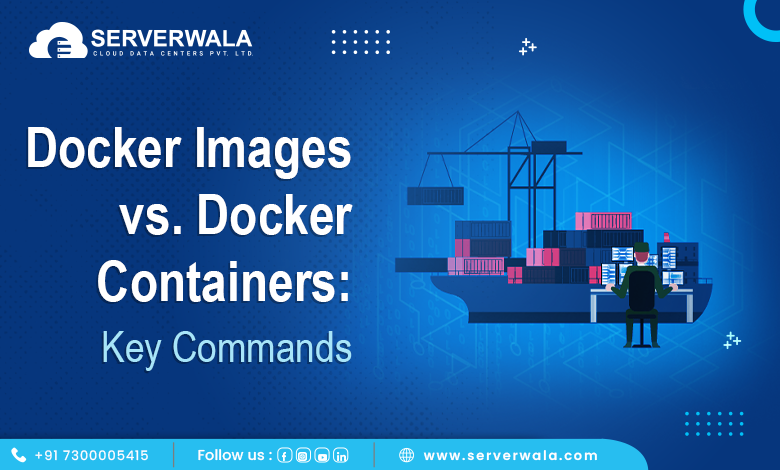
Understanding key Docker commands clarifies the distinction between docker container vs image. Below are essential commands for working with Docker images and Docker containers.
Docker Image Commands:
docker pull [image_name]:Pulls a Docker image from a registry like Docker Hub to your local machine. For example, docker pull nginx downloads the Nginx image.
docker build -t [image_name] .:Builds a Docker image from a Dockerfile in the current directory. The -t option tags the image with a name for easy reference.
docker images:Lists all Docker images accessible locally. You can view the image size, repository, and tags with this command.
docker rmi [image_name]:Removes a Docker image from your local storage. Use this command to clean up unused images.
docker tag [source_image] [target_image]:Tags an existing Docker image with a new name. This is helpful for versioning images.
docker save -o [filename.tar] [image_name]:Saves a Docker image as a tar archive. This allows for easy sharing or backup.
docker load -i [filename.tar]:Loads a Docker image from a tar archive back into the local image repository.
docker push [image_name]:Pushes a Docker image to a registry. This is essential for sharing images with others.
docker inspect [image_name]:Renders comprehensive data about a specific Docker image, including layers and metadata.
Docker Container Commands:
docker run [image_name]:Creates and runs a new Docker container from a specified Docker image. Adding the -d flag runs it in detached mode, making the container run in the background.
docker ps:Lists all active Docker containers. To see stopped containers, add the -a flag with docker ps -a.
docker stop [container_id]:Stops a running Docker container. Use the container ID or name to specify which container to stop.
docker rm [container_id]:Deletes a stopped Docker container from your system. You can remove multiple containers by listing their IDs separated by spaces.
docker restart [container_id]:Restarts a running or stopped Docker container. This is useful for applying changes without rebuilding the container.
docker logs [container_id]:Fetches the logs from a running or stopped Docker container. This command is vital for troubleshooting issues.
docker stats:Shows a live stream of resource usage statistics for all running containers. It’s useful for monitoring performance.
docker attach [container_id]:Links your terminal to a running container. This permits you to interact with the container directly.
docker exec -it [container_id] /bin/bash:Opens an interactive terminal session inside a running container. This command is helpful for troubleshooting or modifying the container while it’s running.
Hybrid Commands (Image + Container):
docker commit [container_id] [image_name]:Constructs a new Docker image from the modifications made to a running or stopped container. This is useful for saving modifications.
docker exec -it [container_id] /bin/bash:Opens an interactive terminal session inside a running container. This is helpful for troubleshooting or modifying the container while it’s running.
docker inspect [image/container_name]:Provides detailed information about a Docker image or container. It’s a useful command for debugging or reviewing configuration details.
docker diff [container_id]:Shows changes made to a container’s filesystem compared to its original image. This helps in understanding modifications.
docker cp [container_id]:[source_path] [destination_path]:Copies files or directories between a container and the local filesystem. This is useful for transferring data.
docker logs [container_id]:Retrieves logs from a running or stopped container. This is essential for monitoring output and debugging issues.
docker tag [image_name] [new_image_name]:Tags an existing Docker image with a new name or tag. This helps organize and manage multiple versions of images.
docker export [container_id] > [file_name].tar:Exports a container’s filesystem as a tar archive. This command is useful for backup or transfer purposes.
docker import [file_name].tar [image_name]:Creates a new image from a tar archive previously created with the export command. This allows for easy migration of container states.
docker attach [container_id]:Attaches your terminal’s standard input, output, and error streams to a running container. This command is essential for interacting with the container’s processes.
Also Read: How to Set Docker File Environment Variables?
Conclusion
Understanding the difference between Docker images vs containers is key to mastering containerized environments. Docker images act as the blueprint, defining what the containerized application will look like, including all dependencies and configurations. In contrast, Docker containers are the running instances of those images, providing the environment where applications are executed.
This distinction—docker container vs image—is crucial for effective deployment as well as scaling of applications. While images are static and reusable, containers are dynamic and ephemeral, making them flexible for tasks like testing and running applications.
Whether you’re building from a Docker image or running a containerized application, recognizing the roles of both is essential for efficient development. Embracing the power of both docker images and containers leads to more consistent, scalable, and portable software development workflows.




